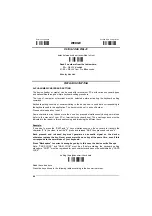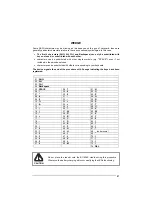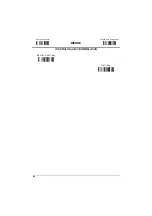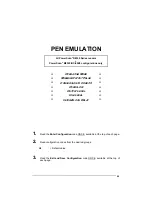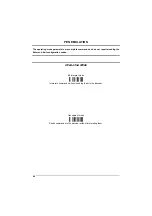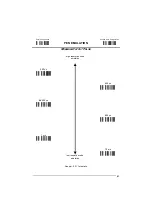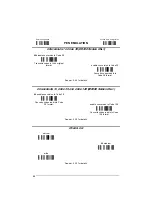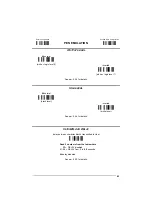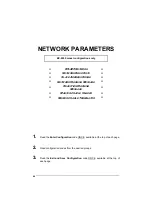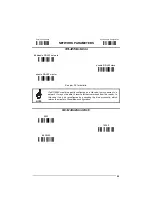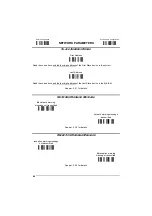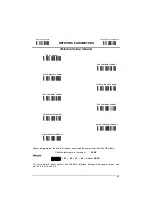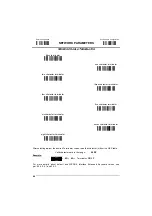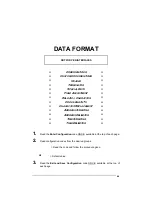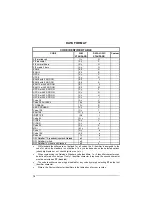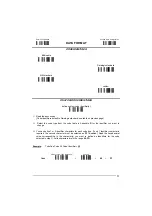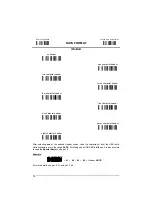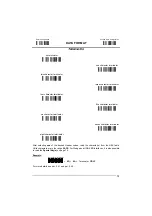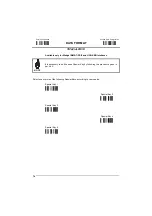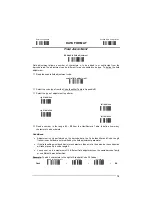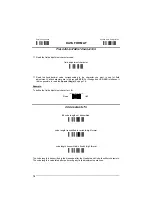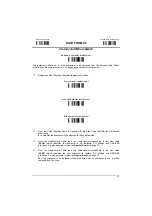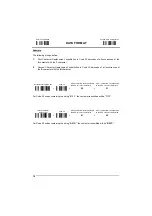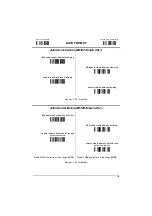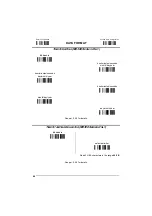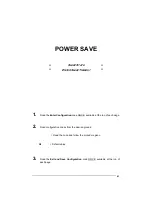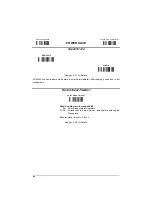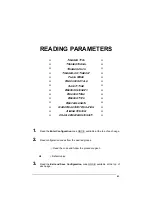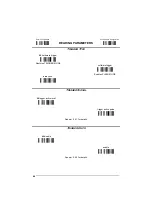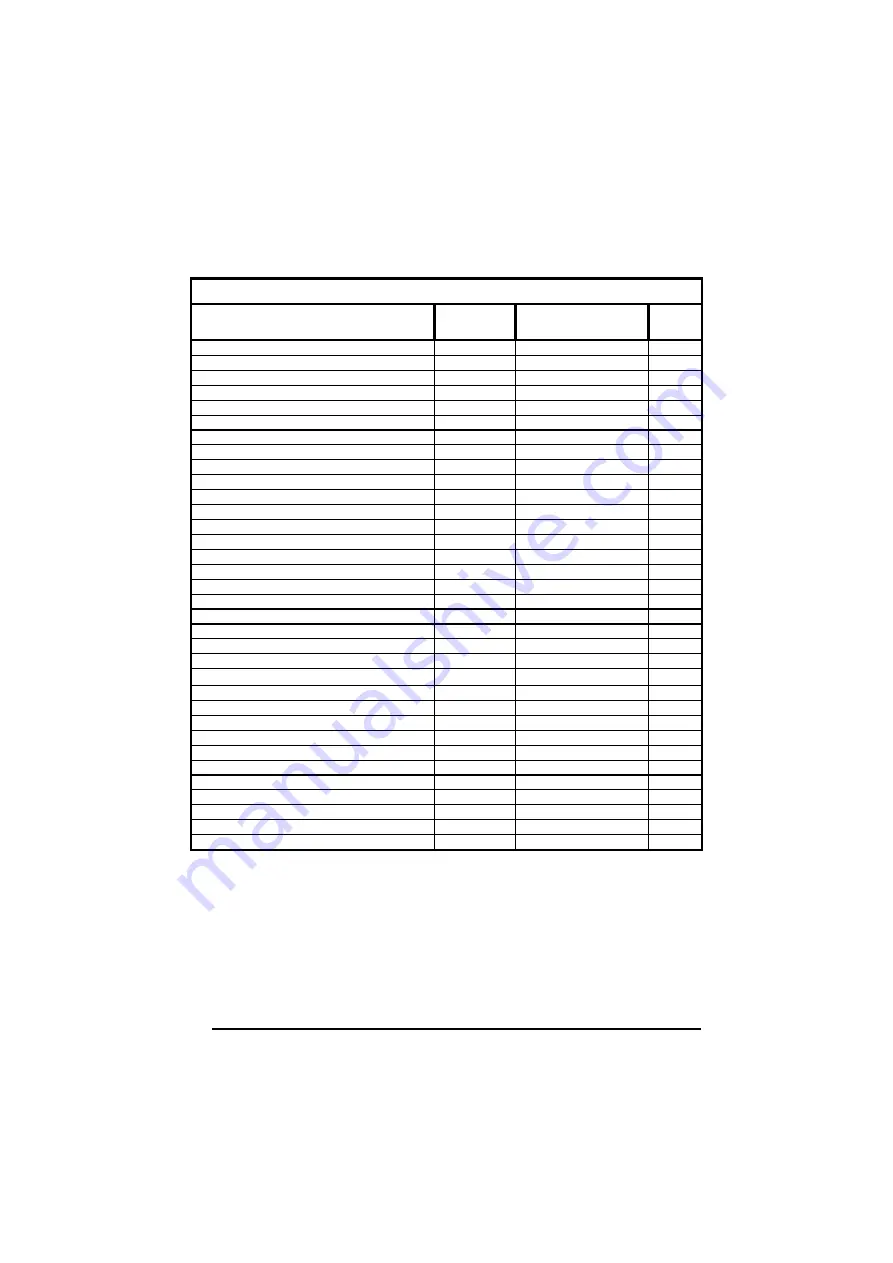
DATA FORMAT
70
CODE IDENTIFIER TABLE
CODE AIM
STANDARD
DATALOGIC
STANDARD
Custom
2/5 interleaved
] I
y
N
2/5 industrial
] X y
P
2/5 normal 5 bars
] S y
O
2/5 matrix 3 bars
] X y
Q
EAN 8
] E 4
A
EAN 13
] E 0
B
UPC A
] X y
C
UPC E
] X y
D
EAN 8 with 2 ADD ON
] E 5
J
EAN 8 with 5 ADD ON
] E 6
K
EAN 13 with 2 ADD ON
] E 1
L
EAN 13 with 5 ADD ON
] E 2
M
UPC A with 2 ADD ON
] X y
F
UPC A with 5 ADD ON
] X y
G
UPC E with 2 ADD ON
] X y
H
UPC E with 5 ADD ON
] X y
I
Code 39
] A y
V
Code 39 Full ASCII
] A y
W
CODABAR ]
F
y
R
ABC CODABAR
] X y
S
Code 128
] C y
T
EAN 128
] C y
k
ISBT 128
] C4
f
Code 93
] G y
U
CIP/39 ]
X
y
Y
CIP/HR ]
X
y
e
Code 32
] X y
X
MSI ]
M
y
Z
Code 11
] H y
b
Code 16K
] K 0
p
Code 49
] T y
q
GS1 DataBar™ Expanded Linear and Stacked
] e 0
t
GS1 DataBar Limited
] e 0
v
GS1 DataBar 14 Linear and Stacked
] e 0
u
•
AIM standard identifiers are not defined for all codes: the X identifier is assigned to the
code for which the standard is not defined. The
y
value depends on the selected options
(check digit tested or not, check digit tx or not, etc.).
•
When customizing the Datalogic Standard code identifiers, 1 or 2 identifier characters can
be defined for each code type. If only 1 identifier character is required, the second character
must be selected as
FF
(disabled).
•
The code identifier can be singly disabled for any code by simply selecting
FF
as the first
identifier character.
•
Write in the Custom character identifiers in the table above for your records.

